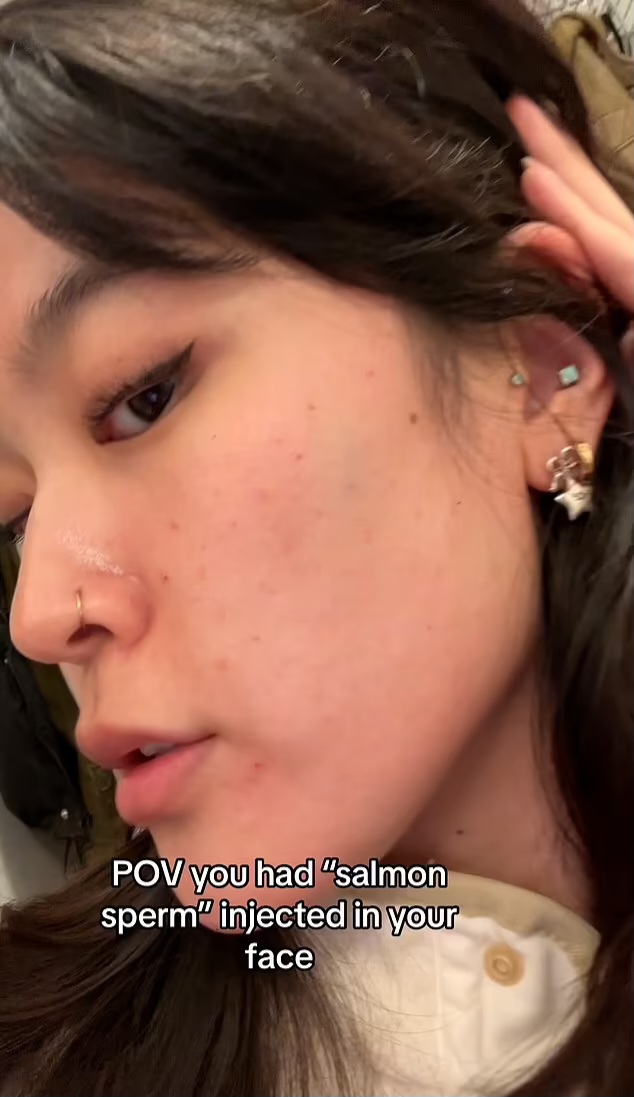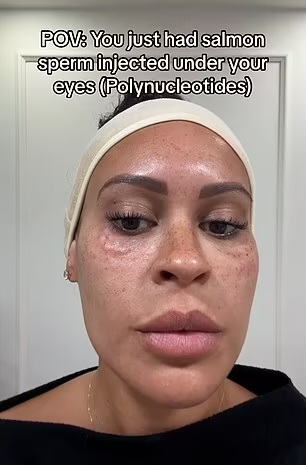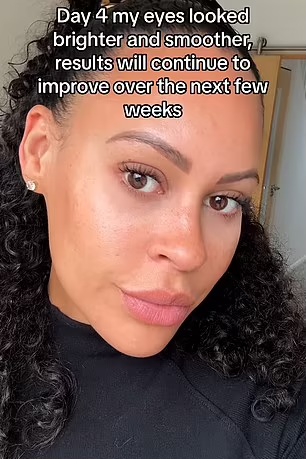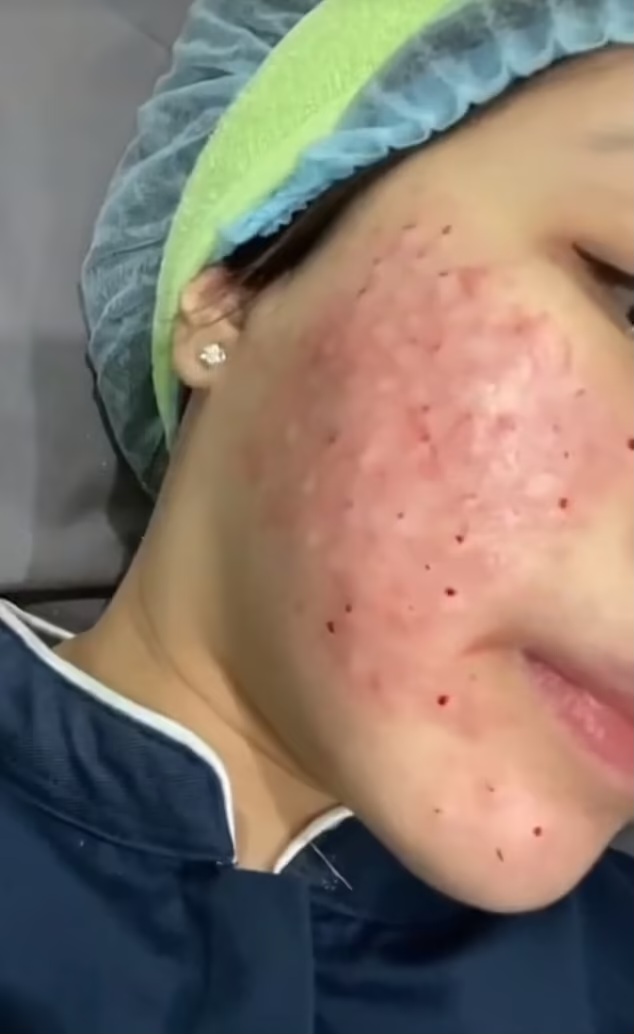CELEBRITY
Exclusive Revealed: The truth behind Kim Kardashian’s salmon sperm facial and the little known side effects of the $500 beauty treatment also loved by Jennifer Aniston
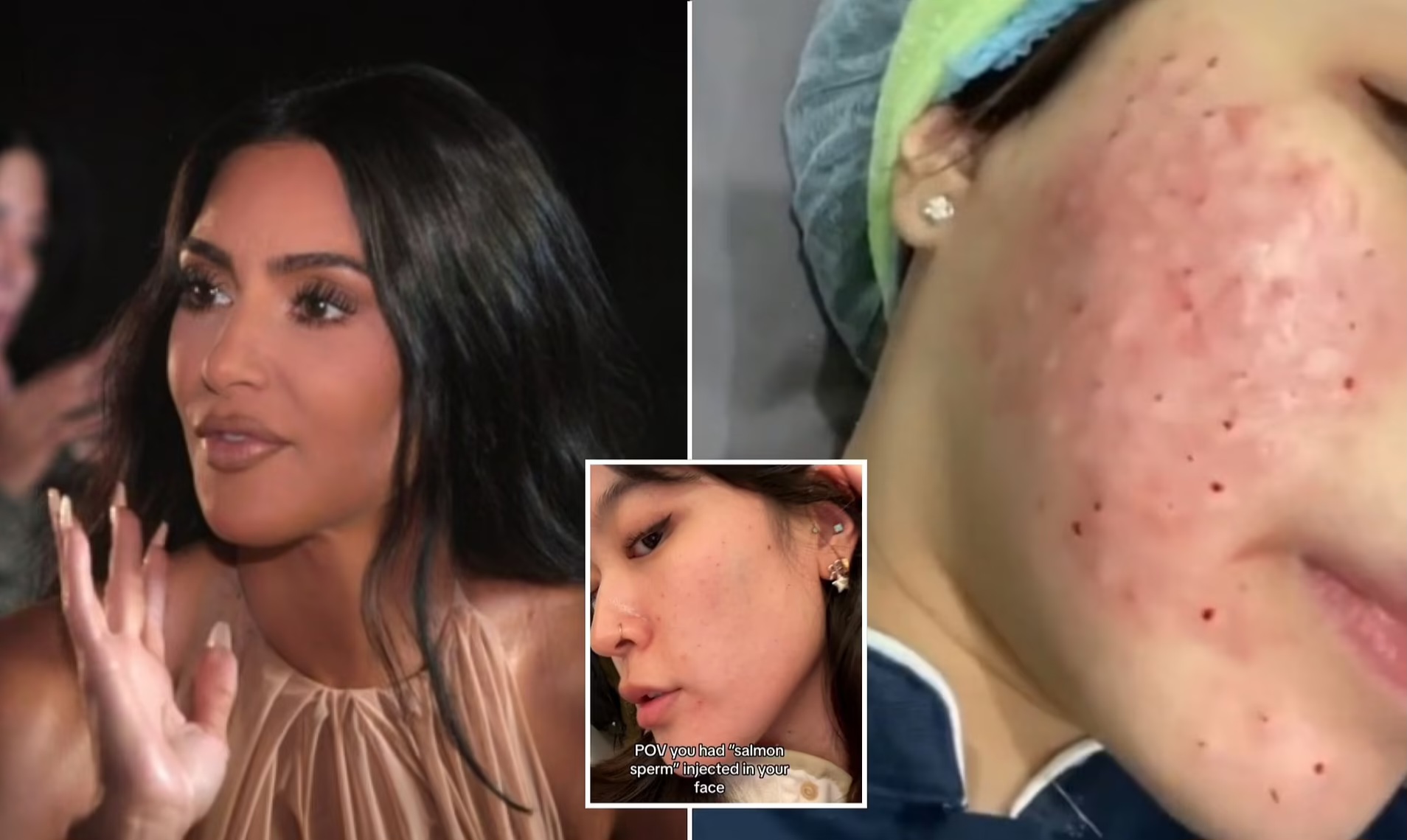
Kim Kardashian revealed she had tried a new beauty trend that involves getting salmon sperm injected into your face.
During an episode of Keeping up with the Kardashians, the 43-year-old told her mother Kris Jenner on set, ‘I got salmon sperm facial with salmon sperm injected into my face.’
As well as Botox-like effects, salmon sperm injections — also known as polynucleotides — are said to give customers a ‘baby face’ and rejuvenated skin.
Kris could only laugh at Kim who is no stranger to a bizarre facial, but the treatment which can cost in the region of £400, can have some unwanted side-effects.
The beauty trend can leave your skin bruised and covered in specs of blood, according to advocates of the wrinkle-defying tweakment. But aesthetic nurses who offer the treatment insist the bruising is only temporary.
One TikTok user with nearly 10,000 followers, who had the treatment, said that she ‘looked like an absolute lunatic at dinner’.
She showed her post-injected face, which was covered in small lumps, specs of dried blood and small bruises.
‘Basically salmon sperm equals baby face and this is what I have to go through for now,’ she said.
‘I have got little bumps and bruises on my face. But beauty is pain, am I right?’
An aesthetic nurse based in Surrey with just over 1,000 followers also posted her face just after getting the treatment under her eyes.
Although the video showed her eyes were visibly swollen, she said the treatment caused ‘minimal’ pain and she ‘could hardly feel it’.
She added that she had a ‘little swelling’ that subsided that evening and completely disappeared by day three.
Another TikTok video posted by someone with more than 4,800 followers showed her getting the injections at a clinic.
Afterwards, her face was lumpy and covered in blood. However, at the end of the video she shared her blemish-free skin completely healed.
Advocates say polynucleotides offer a ‘natural’ alternative to other traditional ‘tweakments’ such as Botox and filler.
Some doctors claim it is safer than other cosmetic injectables, which have been linked to a catalogue of complications including blocked blood vessels, lumpy skin and infections.
It typically uses purified and sterilised DNA molecules extracted from salmon or trout sperm, known as polynucleotides which have anti-inflammatory effects.
South Korea’s aesthetics sector has been using the treatment for over a decade but it’s now gaining popularity among Western celebrities, including Jennifer Aniston, who told The Wall Street Journal she is reaping its skin rejuvenating qualities.
When polynucleotides, DNA molecules extracted from fish sperm, are injected into human skin, fibroblasts are activated.
Fibroblasts are stretchy molecules found in skin that help to maintain the structural framework of the tissue. As we age these fibroblasts decrease.
So, when the polynucleotides are injected under the eyes, in the cheekbones or in the neck, it theoretically ‘rejuvenates’ the skin.
Although they are ‘safer’ than getting filler or Botox, they are still painful and will cause bruising, experts warn.
Emma Wedgwood, an aesthetic nurse who works in a Harley Street clinic and offers the treatment, compares the initial side effect of bumpy skin to ‘bee stings’.
But she told MailOnline this bumpy swelling goes down within a day or two.
‘Sometimes you get bruising depending on where you’re injecting,’ she said.
‘It’s usually the more delicate areas such as the eye which are more susceptible.
‘But not it’s not in the same way as filler where you would pretty much expect bruising from filler and it is a bonus if you don’t, with polynucleotides it’s the other way around.’
Once the swelling has reduced and the skin starts to heal, it can still take months to see the full wrinkle busting effects.
Ms Wedgwood said: ‘It can be frustrating for the patient because they have to wait.
‘You are looking at about three to six months to see the full effects. So, it’s not an overnight job.’

